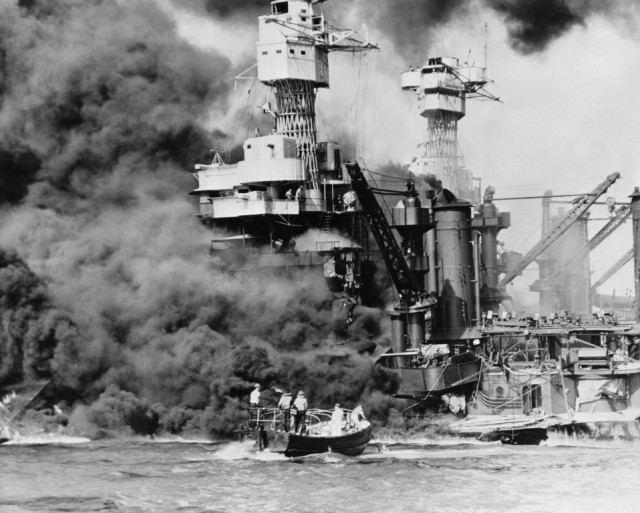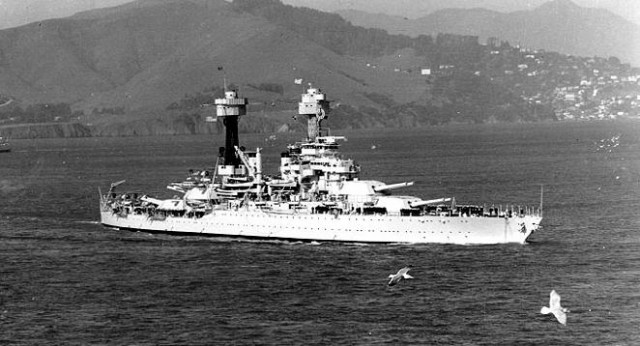
The USS West Virginia was one of the first ships that was hit in the raid; seven Japanese torpedoes hit its port side. Adone “Cal” Calderone was one of the men ordered to head down below deck in an attempt to save the ship by counter-flooding its other side so that it wouldn’t roll over and capsize. Nearby was the USS Oklahoma, which did exactly that as it was moored in the harbor.
Cal worked with his comrades to turn the water valves and flood the ship, but as they did so, they noticed water coming into the room that they were in, seeping through the hatch. He recalls how they all thought they had met their end. The water level in their compartment continued to rise, and the six crewmen were eventually standing on their tip-toes trying to take their last gasps of air.

Cal remembers reaching the point when he no longer could hold his breath, but he kept swimming and kicking his way up the air vent. They all made it to the top, emerging to see total devastation around the harbor – smoke, more Japanese bombing raid, bodies, and fires.
Cal had been part of several US Navy bands, which had a damage control effect during missions. The night before the attack he had performed in competition onboard the USS Arizona. Afterward, he was invited to stay the night on the Arizona, but instead returned to his ship when he failed to get permission to stay.
The next morning he discovered that 1,000 crewmen had died when the ship he was supposed to have been on was destroyed in the Japanese attack.
“I didn’t see the Arizona blow up. I heard it. It went whoosh!” Calderone said, knowing how close he’d come to being on the Arizona that morning. “I could’ve been dead.”
After the attack, the band members were re-assigned to duties in naval intelligence, working with cryptology. He said the Navy figured that if they could read music, they could read codes, too.

Δεν υπάρχουν σχόλια:
Δημοσίευση σχολίου